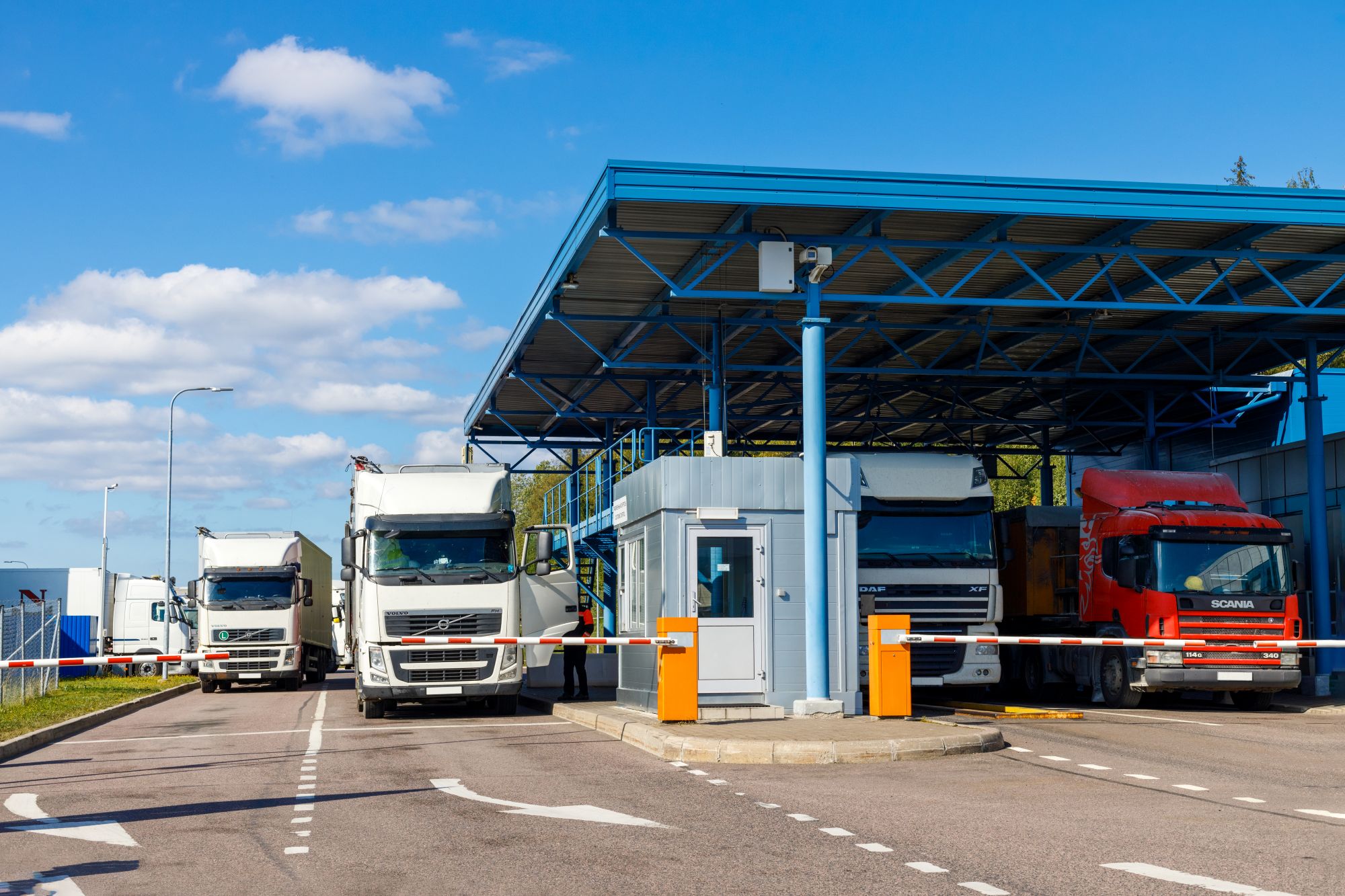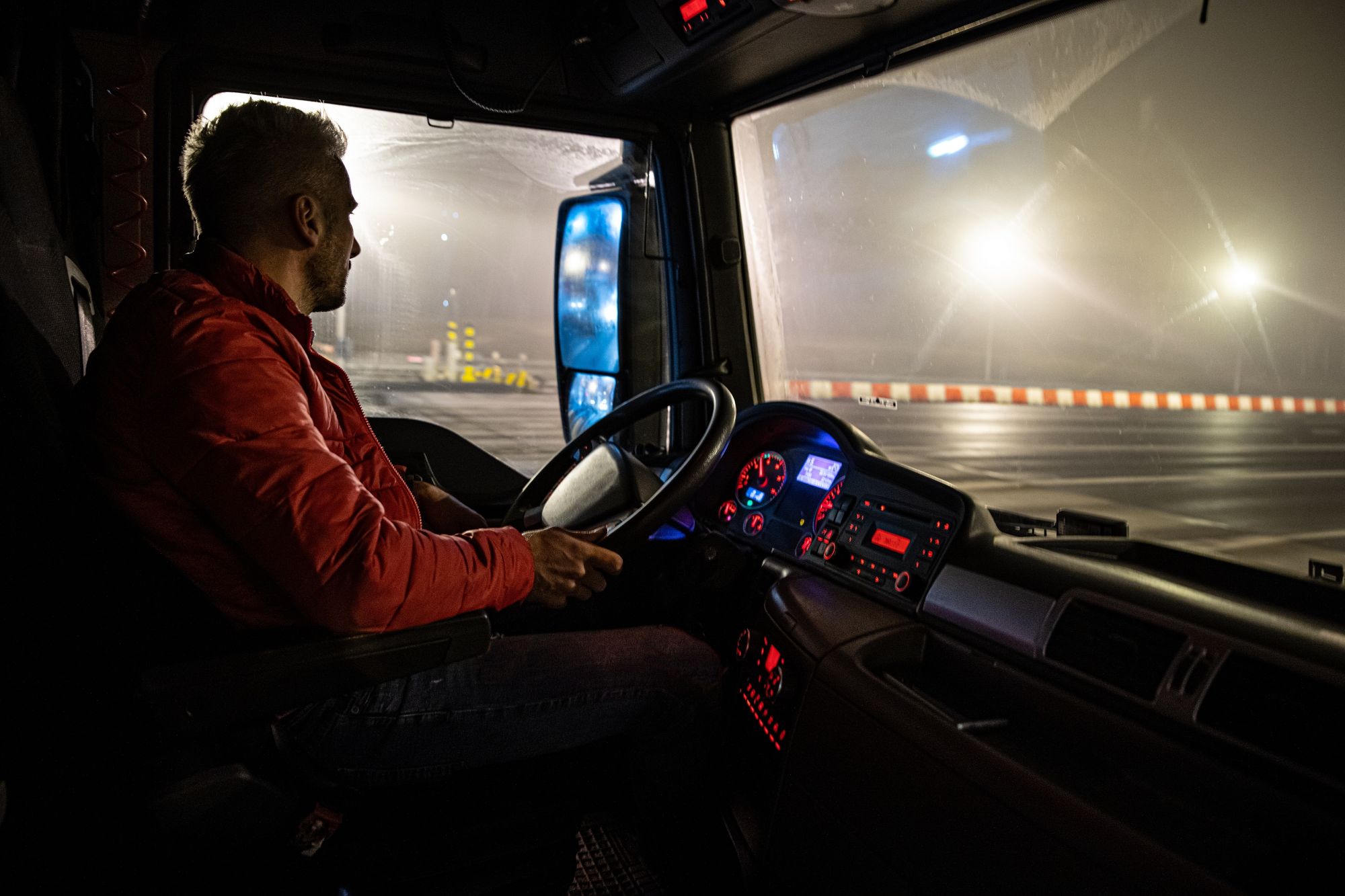
Guest
Granica polsko-ukraińska ponownie otwarta: Co powinni wiedzieć operatorzy flot
Utworzony: 18.06.2025
•
Aktualizacja: 20.06.2025
Po miesiącach zakłóceń ruch towarowy między Polską a Ukrainą znów odbywa się swobodnie. Jednak w obliczu wciąż utrzymujących się napięć i groźby wznowienia blokad, operatorzy flot muszą pozostać czujni na zagrożenia - i przygotowani do ochrony dobrostanu kierowców po obu stronach granicy.
W tym artykule wyjaśniono, co spowodowało zakłócenia, jak wpłynęły one na kierowców i jakie kroki można podjąć, aby zmniejszyć ich wpływ, jeśli strajki powrócą.
Co spowodowało blokadę granicy polsko-ukraińskiej w 2024 roku?
Sytuacja rozpoczęła się pod koniec 2023 r., kiedy polscy kierowcy ciężarówek zaczęli protestować na głównych przejściach granicznych. Twierdzili oni, że decyzja UE o zniesieniu wymogów dotyczących zezwoleń dla ukraińskich przewoźników - wprowadzona jako tymczasowy środek wojenny - doprowadziła do napływu tańszych operatorów podcinających polskie firmy.
Protesty nasiliły się, blokując kluczowe szlaki towarowe do Ukrainy i zatrzymując tysiące pojazdów w kilometrowych kolejkach. W szczytowym momencie blokady ponad 5000 ciężarówek utknęło na granicy, a niektóre z nich czekały ponad tydzień na przekroczenie granicy. Również kierowcy spoza UE cierpieli z powodu dużych opóźnień, napiętych harmonogramów i złych warunków.
To, co zaczęło się jako spór logistyczny, przerodziło się w szerszy protest polskich kierowców ciężarówek dotyczący ukraińskiego importu, dostępu do rynku i wpływu nadzwyczajnych środków transportowych UE. Wkrótce dołączyli do nich polscy rolnicy, sfrustrowani wpływem ukraińskich produktów rolnych na ceny krajowe.
Polscy kierowcy skrytykowali również ukraiński elektroniczny system kolejkowania (https://www.pravda.com.ua/eng/news/2023/11/29/7430863/) na przejściach granicznych - znany jako eCherha - argumentując, że stawia on przewoźników z UE w niekorzystnej sytuacji. Podczas gdy system został zaprojektowany w celu usprawnienia ruchu towarowego poprzez umożliwienie przewoźnikom wstępnej rezerwacji slotów na przejściach granicznych, polscy operatorzy twierdzili, że daje on ukraińskim firmom większą elastyczność i szybszy dostęp. Kwestie takie jak bariery językowe, ograniczona integracja z systemami logistycznymi UE i niespójne wdrażanie sprawiły, że wielu kierowców z UE czekało dłużej na granicy, co dodatkowo podsycało postrzeganie niesprawiedliwego traktowania i przyczyniało się do szerszych niepokojów.
Kalendarium blokad granicy polsko-ukraińskiej
Listopad 2023 r.: Rozpoczynają się protesty na przejściach w Dorohusku, Hrebennem i Korczowej.
**Grudzień 2023 r.: kolejne przejścia graniczne zostają zablokowane, w tym Medyka; trzech ukraińskich kierowców ginie czekając w kolejce.
Styczeń 2024: Polski rząd osiągnął porozumienie w sprawie wstrzymania blokady do marca.
*Marzec-kwiecień 2024: * Sporadyczne blokady wznowione na mniejszych skrzyżowaniach.
*Maj 2025: * Rozpoczęła się nowa czteromiesięczna blokada Yahodyn-Dorohusk, ale została unieważniona przez sąd.
Czerwiec 2025: Wszystkie główne przejścia graniczne pozostają otwarte, ale ryzyko przyszłych zakłóceń pozostaje.
Co robi polski rząd, aby poprawić sytuację?
W odpowiedzi na zakłócenia i ich szersze implikacje, polski rząd przyjął proaktywną postawę. Przejścia graniczne z Ukrainą zostały oznaczone jako infrastruktura krytyczna, co zapewnia im większą ochronę przed przyszłymi blokadami i pomaga zapewnić ciągły przepływ towarów, pomocy humanitarnej i wsparcia wojskowego.
Utworzono również nową Radę ds. Współpracy z Ukrainą w celu ogólnego wzmocnienia więzi między oboma krajami. Częścią jej kompetencji jest poprawa koordynacji w zakresie handlu i transportu. Równolegle Polska inwestuje w infrastrukturę na wschodniej granicy i współpracuje z urzędnikami UE, aby naciskać na bardziej sprawiedliwe warunki dla polskich przewoźników. Chociaż działania te mogą nie rozwiązać sytuacji z dnia na dzień, sygnalizują one długoterminowe zaangażowanie w stabilność i zorganizowany dialog.

Wpływ na kierowców
Blokada stworzyła niedopuszczalne warunki dla zawodowych kierowców. Wielu z nich spędziło dni lub tygodnie w swoich taksówkach bez dostępu do toalet, jedzenia czy bieżącej wody. Niektórzy utknęli w ujemnych temperaturach bez ogrzewania i schronienia.
Trzech ukraińskich kierowców zmarło w okresie blokady, a za czynniki przyczyniające się do tego uważa się wyczerpanie i nieleczone schorzenia.
Zakłócenia spowodowały również znaczne obciążenie psychiczne i emocjonalne, szczególnie dla ukraińskich kierowców próbujących dotrzeć do domu lub wrócić z niego w czasie wojny. Opóźnienia wpłynęły nie tylko na handel, ale także na przepływ paliwa, pomocy i towarów wojskowych o krytycznym znaczeniu dla obrony narodowej Ukrainy.
Podczas gdy polscy protestujący nalegali, aby pojazdy z pomocą humanitarną i wojskową były przepuszczane przez granicę, raporty ukraińskich władz wskazują, że nie zawsze tak było.
Warunki te były nie tylko traumatyczne dla kierowców - ujawniły również luki w zarządzaniu ryzykiem floty i planowaniu awaryjnym. Operatorzy muszą teraz traktować zakłócenia na granicach jako ciągłe zagrożenie.
Co powinni wiedzieć operatorzy flot
Chociaż sytuacja ustabilizowała się, podstawowe napięcia między polskimi przewoźnikami, ukraińskimi operatorami i polityką UE pozostają nierozwiązane. Menedżerowie flot działający w regionie lub w jego pobliżu powinni być wyczuleni na możliwość dalszych akcji protestacyjnych - zwłaszcza w sezonowych punktach nacisku lub przeglądach polityki UE.
Oto zalecenia zespołu SNAP dotyczące skutecznego zarządzania sytuacją:
1. Monitorowanie sytuacji na granicy polsko-ukraińskiej
Bądź na bieżąco z wiadomościami od polskich i ukraińskich stowarzyszeń logistycznych i źródeł rządowych. Subskrybuj powiadomienia o ruchu granicznym i śledź zaufanych partnerów logistycznych, aby otrzymywać aktualizacje w czasie rzeczywistym.
2. Zaplanuj elastyczne trasy
Miej plany awaryjne, które przekierują pojazdy przez Węgry, Słowację lub Rumunię, jeśli przejścia między Polską a Ukrainą zostaną ponownie zablokowane.
3. Wspieranie dobrostanu kierowców
Upewnij się, że Twoje ciężarówki są zaopatrzone w niezbędne produkty: żywność, wodę, power banki i zestawy medyczne.
W okresach niepokojów dostęp do bezpiecznych parkingów dla ciężarówek w Polsce jest niezbędny, aby kierowcy byli bezpieczni, wypoczęci i poza drogą. Zapewnij kierowcom aktualne informacje o bezpiecznych parkingach dla ciężarówek i miejscach odpoczynku na trasie.
Nasza aplikacja intruck zawiera interaktywną mapę parkingów dla ciężarówek z 11 000 dostawców usług dla pojazdów ciężarowych w całej Europie, w tym w Polsce, na Węgrzech i Słowacji. Jest to łatwe w użyciu narzędzie do znajdowania bezpiecznych miejsc postojowych dla ciężarówek w Polsce, dzięki czemu jest szczególnie cenne w okresach strajków.
Chociaż aplikacja nie oferuje obecnie możliwości rezerwacji miejsc parkingowych dla ciężarówek na Ukrainie, ukraińscy operatorzy i kierowcy mogą korzystać z intruck, aby zlokalizować niezawodne postoje w UE podczas długodystansowych podróży lub w okresach zakłóceń.
4. Zarezerwuj bezpieczny parking dla ciężarówek w Polsce
Przy zwiększonym popycie w okresach zakłóceń, zaawansowana rezerwacja ma kluczowe znaczenie. Kierowcy mogą również korzystać z intruck, aby znaleźć i zarezerwować zaufany parking dla ciężarówek w Polsce z wyprzedzeniem. Niezależnie od tego, czy pojazdy podróżują w głąb Europy Wschodniej, czy wracają na zachód, umożliwia to kierowcom dostęp do parkingów dla ciężarówek w pobliżu Warszawy i innych obszarów o dużym natężeniu ruchu.
5. Regularna komunikacja z kierowcami
Ustal harmonogramy odpraw, zwłaszcza jeśli spodziewane jest długie oczekiwanie lub objazdy. Zapewnij kierowców, że ich dobre samopoczucie jest priorytetem i zapewnij wsparcie, jeśli napotkają nieoczekiwane opóźnienia. Jeśli to możliwe, zasugeruj z wyprzedzeniem bezpieczne miejsca parkingowe dla ciężarówek w Ukrainie, aby wiedzieli, gdzie mogą zrobić sobie przerwę.
Patrząc w przyszłość
Ponowne otwarcie granicy polsko-ukraińskiej to dobra wiadomość dla flot działających w Europie Wschodniej. Jednak w obliczu nierozwiązanych napięć politycznych ważne jest, aby być przygotowanym.
"Sytuacja szybko się zmienia" - mówi Nick Renton, szef europejskiej strategii i rozwoju biznesu w SNAP. "Biorąc pod uwagę możliwość dalszych zakłóceń na granicy polsko-ukraińskiej, zalecamy operatorom flot wdrożenie solidnych planów, aby nadać priorytet dobremu samopoczuciu kierowców i zminimalizować ryzyko operacyjne. Obejmuje to zapewnienie elastyczności w harmonogramach dostaw, zapewnienie niezbędnych zapasów w pojazdach i zapewnienie kierowcom dostępu do bezpiecznego parkingu dla ciężarówek.
"Nasza sieć postojów dla ciężarówek z możliwością rezerwacji w całej Europie i Polsce zapewnia narzędzia pozwalające zachować elastyczność - oferując spokój ducha zarówno operatorom, jak i kierowcom, gdy warunki na ziemi stają się nieprzewidywalne".
Zobacz naszą interaktywną mapę [bezpieczny parking dla ciężarówek w Polsce już dziś] (https://snapacc.com/map/poland).



